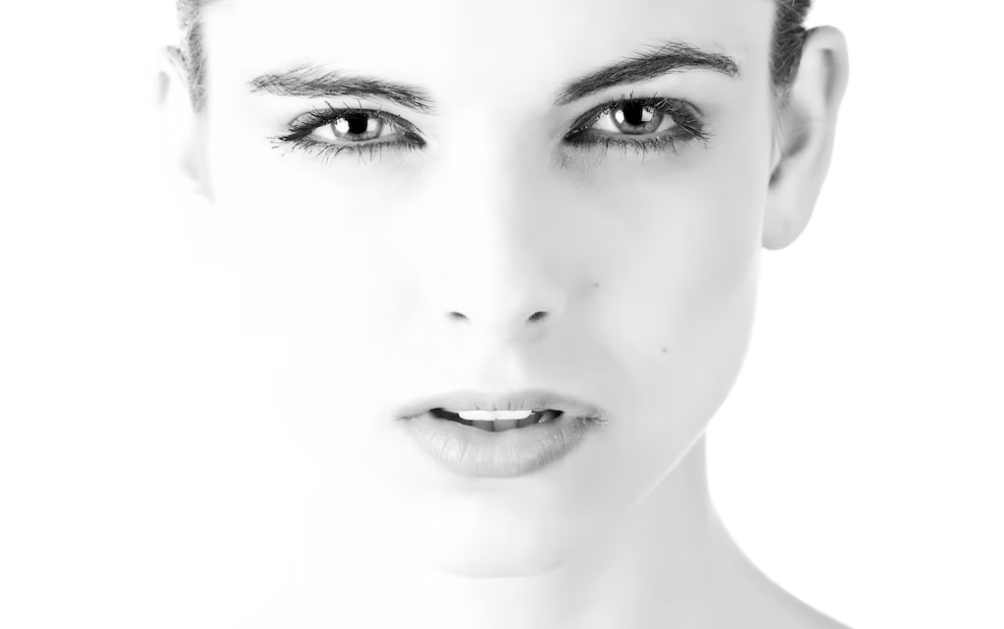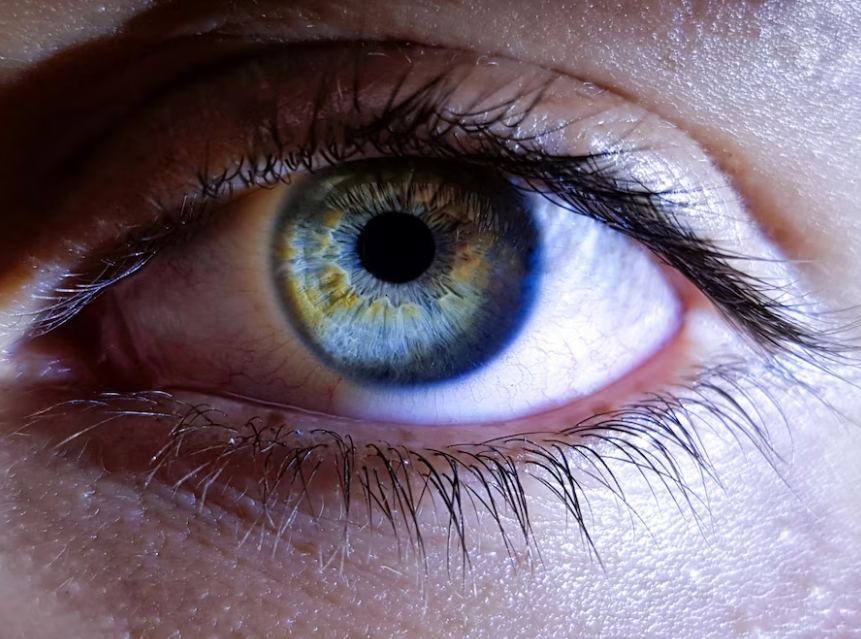In the realm of portrait photography, the eyes are often referred to as the windows to the soul. They hold the power to convey emotions, tell stories, and establish a connection between the subject and the viewer. As a photographer, mastering the art of focusing on the eyes is essential to creating powerful and impactful images. In this article, we will explore various techniques and tips to help you capture the essence of your subjects through their eyes.
Mastering Sharp Eyes in Portrait Photography
High Enough Shutter Speed
Before delving into focus settings or making drastic changes, ensure that your shutter speed is not undermining your efforts to capture sharp eyes in portraits.
Many photographers mistakenly believe that shutter speed is not a major concern when photographing stationary subjects. However, if you aim for razor-sharp eyes, do not underestimate the significance of a proper shutter speed.
Even the slightest movement from the subject or a shaky hand can blur perfectly focused eyes. Given the intricate details in the eyes, even minor motion can lead to undesirable motion blur, particularly with today’s high-resolution cameras.
A useful guideline for shutter speed is to shoot faster than the reciprocal of your focal length. For instance, if you are using a 100mm lens, your shutter speed should be at least 1/100 of a second.
Should you observe a hint of motion blur affecting the subject’s eyes, consider increasing the shutter speed by one stop above the recommended value. For example, at a 100mm focal length, try 1/200 of a second.
Starting with a higher shutter speed, if feasible in the lighting conditions, poses no harm. This way, you either resolve the issue or identify that the problem lies with the focusing settings rather than the shutter speed.
Balancing Bokeh and Sharpness: Making Informed Aperture Choices
Many photographers are drawn to wide apertures like f/1.4 for their ability to create a beautiful blurry bokeh effect in the background. However, here’s a secret that many pros won’t openly share: when sharp eyes are paramount in your paid work, consider stopping down to f/2.8 or even higher.
Even top-notch lenses experience a slight decrease in sharpness when shot wide open, resulting in some softness even in the in-focus areas, no matter how precise your focus.
If your goal is to achieve both a blurry background and exceptional sharpness in the subject’s eyes, shooting fully wide open is not the ideal solution.
Instead, employ some photography expertise to strike the perfect balance.
Position your subject in a way that creates more space between them and the background. Seek out locations where the background is distant from the subject. This increased distance will allow you to achieve a pleasing bokeh without sacrificing sharpness by opening up the aperture excessively. By applying these techniques, you can deliver professional-level portraits with captivating bokeh and crystal-clear eyes that leave a lasting impression.
Achieving Pin-Point Precision: Harnessing Single Point Focus
Modern camera focus systems are undeniably impressive, often automatically detecting and honing in on a subject’s face. However, for precise control over focus and to ensure the eyes are tack sharp, consider using the single point focus mode and manually adjusting the focus point to cover the eyes.
Sony has popularized a focus mode called “eye auto focus,” designed to detect and focus directly on the subject’s eyes. While this feature works quite well, achieving absolute precision in focus may still require additional measures, especially when shooting handheld or with subjects in motion.
To guarantee spot-on focus on the eyes, engage the single point focus mode and maneuver the focus point to encompass the eyes. This level of control enables you to capture detailed and sharp eyes, elevating your portraits to new levels of excellence. Although no method can guarantee perfection without a tripod and a perfectly still subject, utilizing the single point focus mode empowers you to attain a higher degree of accuracy in your focus.

Precision in Focus: Advancing Beyond the “Focus and Recompose” Method
The traditional “focus and recompose” technique has been a staple in photography teachings for years. While it can prove useful in fast-paced scenarios, it may not be the ideal approach for posed portraits, especially when sharp eyes are of utmost importance.
The issue lies in how the “focus and recompose” method alters the focal plane—the area of depth that remains sharp in the image. Shooting with a wide aperture and at a close distance can result in a thin focal plane. As you recompose by moving the camera, you inadvertently shift the area of focus from the eyes to the nose or other parts of the subject.
This minor adjustment can drastically impact the perceived sharpness of the final image, leading to blurry eyes and sharp noses or other unintended areas. To overcome this challenge, opt for a more precise method: adjust the focus point on your camera to align precisely with the eyes when composing the frame.
Though this approach may require a bit more time and effort, the results will undoubtedly be worth it. By ensuring exact focus on the eyes during the shoot, you can avoid disappointment when reviewing your images later. Your portraits will exude a newfound level of clarity and professionalism, leaving viewers captivated by the mesmerizing sharpness of the subject’s eyes.
Enhancing Sharpness through Proper Lighting
The eyes serve as the focal point of any portrait, and their sharpness is paramount to create compelling images. However, even with precise focus, insufficient lighting can diminish the perceived sharpness of the eyes, making them appear dull and lackluster.
The secret lies in how light enhances contrast, which, in turn, accentuates sharpness. When the eyes lack adequate light, the contrast diminishes, resulting in a loss of vibrancy and sharpness.
While post-processing can offer some brightening options, it cannot replicate the authentic contrast and sharpness that real light provides during the actual shot. As a photographer, you must prioritize proper lighting during the shoot itself to achieve optimal sharpness in the eyes.
Various methods can accomplish this, including natural light, flash photography, or the use of reflectors. Although this is not an exhaustive lighting tutorial, the key is to be attentive to the amount of light falling on the eyes when composing your shot and positioning your subject.
By mastering the art of illuminating the eyes effectively, you can elevate your portraits to a new level of brilliance. The eyes will radiate with sharpness and life, drawing viewers into the captivating essence of your subjects. Remember, light is the catalyst that unlocks the true potential of sharp, engaging, and unforgettable eyes in portrait photography.
Enhancing Sharpness with Lightroom or Photoshop: A Crucial Step in Post-Processing
If you shoot in RAW format (which is highly recommended), sharpening becomes an essential part of the initial RAW editing process.
Among all elements in an image, the eyes are particularly sensitive to the effects of sharpening. A lack of sharpening in this area can quickly become apparent and may result in less impactful portraits.
When using Lightroom to process your RAW images, you’ll notice that each image receives a default amount of sharpening. In most cases, you’ll need to increase this level to bring out the desired sharpness.
Moreover, pay close attention to the “Masking” slider located at the bottom of the sharpening panel. Holding down the Alt/Option key while adjusting this slider allows you to visualize the sharpening effect. Increasing the masking value causes the sharpening to be applied only to areas of higher contrast, ensuring more precise and targeted sharpening.
By skillfully employing sharpening techniques in Lightroom or Photoshop, you can accentuate the sharpness of the eyes, bringing out their intricate details and creating portraits that captivate viewers. Don’t overlook this crucial step in post-processing, as it can make a significant difference in the overall impact of your images.
Lens Calibration: Fine-Tuning for Sharper Eyes
After trying the aforementioned techniques and still encountering soft eyes in your images, it may be time to consider calibrating your lens. Note that this process is typically applicable to dSLR cameras, as mirrorless cameras generally do not require lens calibration.
If a lens is not calibrated correctly, it might focus slightly behind or in front of your intended point of focus. In higher-end dSLR camera models, such as the more expensive ones, you have the option to make adjustments to the calibration of each specific lens. This process is commonly referred to as Auto Focus Micro Adjustment (AFMA).
To initiate lens calibration, you have several methods at your disposal. However, explaining the technicalities in typing can be complex. To assist you further, I recommend referring to this informative video that illustrates the lens calibration process concisely.
The Significance of Focusing on the Eyes
The reasons behind the emphasis on focusing on the eyes in portrait photography can be as profound as the notion that eyes are the windows to the soul. As William Henry beautifully stated, “The eyes shout what the lips fear to say,” emphasizing the profound expressiveness of the eyes. They serve as our most visually powerful tool for communication.
In personal encounters, we cherish and encourage direct eye contact, as it enhances our ability to connect and communicate with one another. Similarly, in portrait photography, the eyes play a crucial role in conveying the subject’s characteristics to the viewer. As a photographer, your responsibility is to ensure that these characteristics remain genuine and authentic, capturing the essence of the individual rather than a mere fleeting moment.
The challenge lies in going beyond generic expressions and delving into the depths of the subject’s personality. Before and during the photoshoot, create a comfortable and inviting atmosphere that encourages the sitter to reveal the profound aspects of their identity through their eyes. Be prepared to seize those fleeting moments when the true essence of the subject shines through.
By focusing on the eyes and allowing them to communicate with your audience, your portraits will transcend mere images, becoming powerful reflections of the human spirit. Embrace this approach, and your photography will convey captivating stories that leave a lasting impact on those who behold your artistry.

Techniques for Emphasizing the Eyes in Portraits
Directing the viewer’s eyes to that of the subjects can be accomplished in many ways and the skilled portraitist can utilize and combine several techniques to do so.
Proximity
One effective technique in portrait photography involves getting up close and personal with your subject, focusing on their face to draw the viewer’s attention directly to their eyes. Position your camera directly in front of the subject and get as close as possible while maintaining focus and ensuring their comfort. Adjust the focus carefully to make sure the closest eye or both eyes appear sharp and clear.
Guiding your subjects during a portrait session is crucial as a photographer. Provide clear and easy-to-follow instructions to capture them in the best light and with the most flattering expression. You may direct the sitter’s eyes to look straight at the camera lens, towards a light source, or even away from the camera to create a particular effect. Utilizing hand placement, poses, and head positioning can also be effective techniques to draw attention to the subject’s eyes and enhance the overall composition of the portrait.
Aperture
Achieving a captivating portrait with a strong emphasis on the eyes can be accomplished through various techniques, one of which involves setting the lens aperture to create a shallow depth of field. Opting for lower aperture settings, such as f/2.8 and below, results in a narrow plane of focus while leaving the rest of the image blurred. It’s essential to maintain precise focus on the eyes when shooting with a large aperture, as even the slightest movement can shift the focus to the nose or hair. When executed successfully, this technique produces stunning portraits, with the eyes sparkling and drawing the viewer’s attention amidst a beautifully blurred face and background. However, it requires accuracy in focus, and one must consider the increased light entering the frame with a wider aperture, adjusting ISO and shutter speed accordingly. Modern mirrorless cameras often provide helpful features like focus peaking and focus magnification to aid in achieving precise focus.
Furthermore, the use of lighting plays a crucial role in creating impactful eye-focused portraits. Whether it’s utilizing warm sunlight during the golden hour to illuminate the subject’s eyes or employing a studio strobe setup to highlight them, proper lighting techniques are a portraitist’s best allies. Skillful use of studio lights and light-modifying equipment allows for shadows to be strategically placed while making the eyes glow within those shadows, adding depth and dimension to the portrait. Another effective method involves incorporating “catch lights,” which are reflections of the light source itself visible in the subject’s eyes. This technique has proven to create engaging and captivating portraits that draw viewers in.
Selecting the Right Equipment
Selecting the right equipment is a crucial aspect when it comes to mastering the art of focusing on the eyes in photography. The choice of camera and lens combination can have a profound impact on your ability to capture precise and captivating eye-focused portraits.
- A camera with advanced auto-focus capabilities and reliable manual focus options can offer the necessary tools for achieving sharpness in the eyes;
- Pairing the camera with a suitable lens that allows for a wide aperture, such as f/2.8 or below, can create a shallow depth of field, drawing attention directly to the subject’s eyes while beautifully blurring the background.
Investing in high-quality gear that aligns with your artistic vision will undoubtedly enhance your ability to create stunning eye-centric photographs.
Conclusion
Mastering the technique of focusing on the eyes in photography is a powerful skill that can elevate the impact and emotional depth of your portraits. By understanding the importance of eye focus, selecting the right equipment, and employing various techniques such as manual focus, shallow depth of field, and effective lighting, you can create captivating and expressive images that draw viewers into the soul of your subjects. Through practice, patience, and a keen eye for composition, you can unlock the true potential of eye-focused photography, capturing the essence and emotions that lie within the windows to the soul. So, go forth, embrace the challenge, and let the eyes tell their unique stories in every frame you capture.
